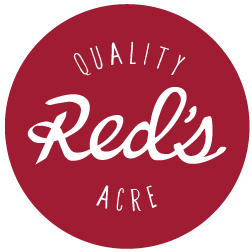Starting Seeds
/It’s late February/early March and we are starting seeds in flats for transplanting outside once the weather and soil warm up. The past month, the weather outside has been difficult, to say the least—snow, sleet, freezing rain, temperatures in the teens and twenties. But in our new greenhouse with its new propane heater, the ‘weather’ is much more amenable to baby seedlings. Overnight we keep the temperature in the 50s, and during sunshiny days we have to open the doors or even roll up the sides to keep the temperature from going into the 90s! The greenhouse really works.
red's hoop house
Starting seeds in the spring is a special event. After the long winter of browns and grays outside, we will soon be seeing the greens of our new baby plants. At this stage, we are working with ‘72s.’ That means we are using flats with 12 rows, 6 cells per row. Here’s the process:
·I fill a flat with potting soil—a special mix that has a loose texture for tiny rootlets, holds water to keep those rootlets from drying out, and provides some nutrients to feed the baby plants.
·Each flat gets two labels, in case one gets broken or misplaced.
·Next, I make a slight depression in each cell with a fingertip.
·Now it’s one seed per cell.Shake a few seeds out of the packet. One, two, three, four, five, six. One, two, three, four, five, six. I have to count to be sure I don’t miss a cell.Kale, lettuce, collards, kohl-rabi. The seeds are often very small and hard to see.
·Shake a few more seeds out of the packet. With my stubby fingers I can easily miss a cell.One, two, three, four, five, six.One, two, three, four, five, six.
·Row twelve.One, two, three, four, five, six.Seventy-two seeds, one per cell.(Sometimes two per cell for seeds with poor germination.)
·I add a thin layer of potting soil over the tops of the cells and then gently water the whole flat. Gently, but thoroughly, so the seeds don’t float to the top of the soil.
On to the next flat. And the next. And the next.Onions, scallions, fennel. Peppers, tomatoes, eggplants. Seed after seed. Cell after cell. Flat after flat. To some, the process may seem tedious. To me, it’s a joy, because in a few days there will be tiny specks of green poking up—seed leaves or cotyledons. Little spikes of scallions. Thin wisps of tomatoes. Heart-shaped kale and collards. Looking down the tables filled with flats there will soon be a haze of green plantlets. And then a lawn. Dave and Caitlin and I have done our bit of magic.
Seedlings galore
Infant red russian kale
Toddler Red Russian Kale
fennel
When they are old enough, some of these seedlings will be transplanted directly into the beds we have prepared in the garden. Others will be transplanted into larger pots so they can develop dense root systems and thick, sturdy stems. Soon we’ll be eating tender lettuce and juicy tomatoes. But for now: One, two, three, four, five, six. One, two, three, four, five, six.





